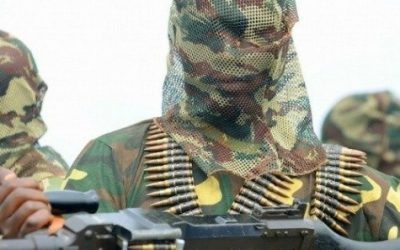Boko Haram is a militant Islamist group based in northern Nigeria and founded in 2002. It has been terrorising Nigerians through assassinations and bombings for several years. They want to overthrow the Nigerian government and create an Islamic state, imposing Sharia law.
Boka Haram means “Western education is sinful but the group’s official name is Jama’atu Ahlis Sunna Lidda’awati wal-Jihad, which means “People Committed to the Propagation of the Prophet’s Teachings and Jihad”.
The group’s fundamentalist interpretation of Islam makes it “haram,” or forbidden, for Muslims to participate in any social, political, and educational activity linked with the West. That includes taking part in elections, receiving a secular education, and wearing Western clothes.
At a glance Boko Haram is Nigeria’s version of the Taliban. Since the death of their founder, Mohammed Yusuf in 2009, they have been waging war against the Nigerian government and Christian groups. The US labelled them a terrorist organisation in 2010 after concerns that they had ties with al-Qaeda, so far though the group remains an internal problem for Nigeria.
Killing schoolchildren and kidnapping women
Boko Haram were known for kidnapping women from long before they grabbed international headlines for abducting the teenage girls.
The group have attacked 50 schools over the past year, killing more than 100 schoolchildren and 70 teachers. Thousands of students and teachers across the northern part of the country have been forced to flee their schools because of the violence.
Nigeria’s ineffective military
Nigeria’s military was once seen as a force for stability across West Africa. A lack of investment in training, failure to maintain equipment and dwindling cooperation with Western forces has damaged Nigeria’s armed services.
Now it struggles to keep security within its own borders giving Boko Haram almost free reign to kill thousands in the northeast.
Five things you should know about Boko Haram
According to the Nigerian Tribune, one of the greatest problems with targeting Boko Haram is their use of camouflage to deflect military attacks. One source told the newspaper that the insurgent group made use of used oil and sand to coat the body of the vehicles which they used in their attack, rendering their vehicles invisible from above.
The Nigerian Air Force had no idea that the tactic worked until a captured militant divulged the information.
In 2014 Boko Haram stepped up its campaign against Western education, which it believes corrupts the moral values of Muslims, especially girls, by attacking two boarding schools – in Yobe in March and in Chibok in April.
It abducted more than 200 schoolgirls during the Chibok raid, saying it would treat them as slaves and marry them off – a reference to an ancient Islamic belief that women captured in conflict are part of the “war booty”.
57 of the schoolgirls escaped in the months following the incident while others were rescued by Nigerian military forces on several occasions. Some have described their capture in appearances at international human rights conferences. Since then hopes were raised on various occasions that the 219 remaining girls might be released. Newspaper reports suggested that Boko Haram was hoping to use the girls as negotiating pawns in exchange for some of their commanders in jail.
In May 2016, one of the missing girls, Amina Ali, was found. She claimed that the remaining girls were still there, but that six had died. A further 21 girls were freed in October 2016 and another was rescued the following month. Another girl was found in January 2017. 82 more girls were freed in May 2017 and one of the girls was rescued in January 2018.






Leave a Reply